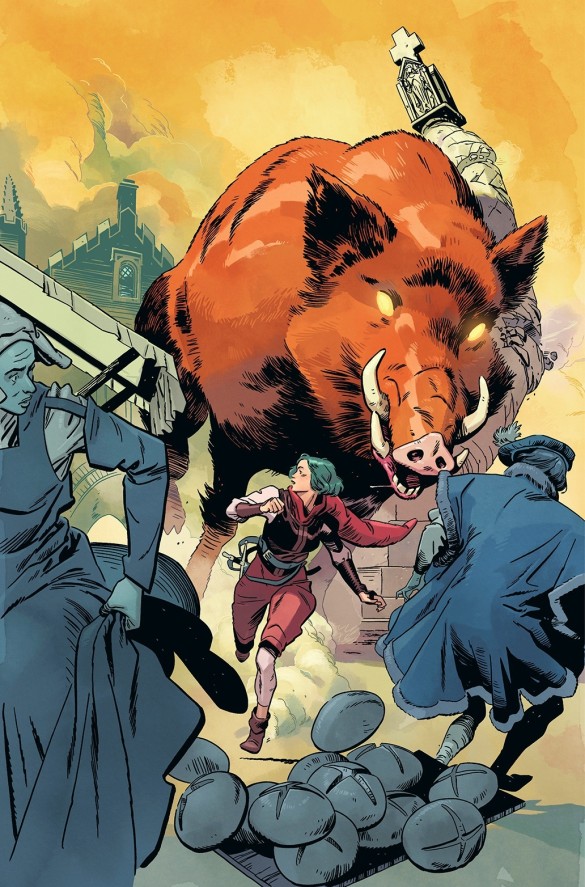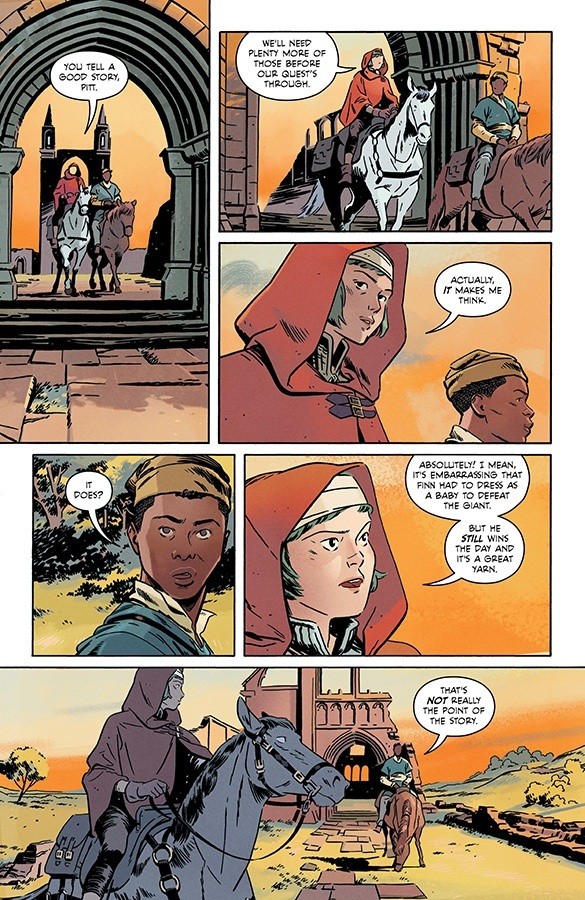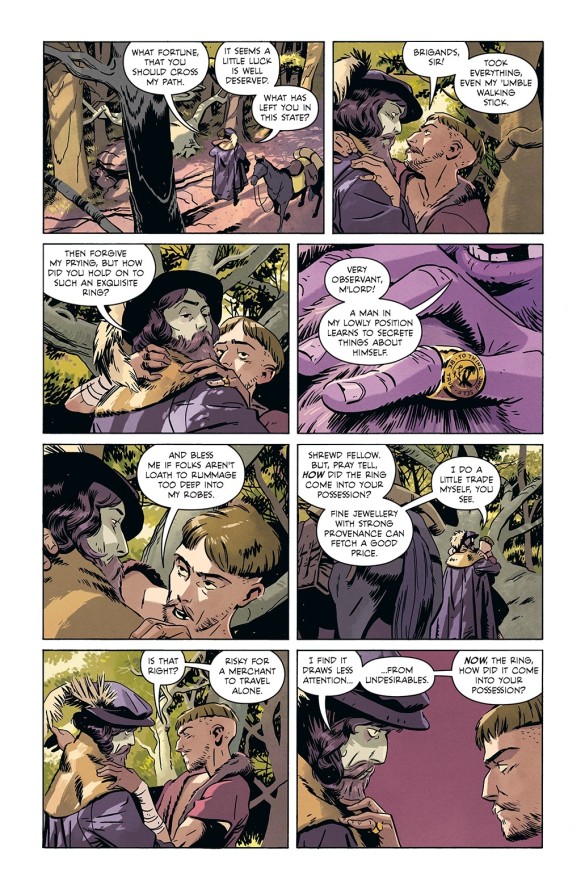As one of the best comics of the last year, Gospel is a staggering blend of fantasy and historical fiction. A Studio Ghibli-inspired and deeply thematic story, Will Morris shows off an incredible range of creativity with this 6-issue mini-series.
I recently got to speak with Morris and talk about his process approaching the creation of this wonderful comic:
MFR: Gospel is the perfect blend of historical fiction and fantasy. How did you find the line between truth and fiction, and how did you know when to reel the story in either direction?
MFR ON YOUTUBE (latest video)
Help us reach 5K Subs!
Morris: Thanks, Justin! I wonder how many people hit the back button at the mention of ‘historical fiction’. My interest has always been where history, art and stories meet. Devil’s simmering your soul for all eternity may seem the stuff of fantasy for most folk today, but likely felt a very real prospect for many in the 16th century. My guide for finding that line between historical accuracy and fantasy was simply telling Matilde and Pitt’s story the best I could. The English Reformation setting is a great context for the story because it was a time of turmoil, conflict and new ideas devouring old. That situation gives Matilde and Pitt a thrilling tightrope to walk. At the same time, the earliest spark for the story was stumbling across the legend of St. Michael and the devil, attached to a lonely hilltop church in Devon. These legends and tales paint more of a picture of how normal folk entertained themselves and made sense of the world. Trying to understand the meaning behind these stories is fascinating and at its heart Gospel is all about storytelling.
MFR: How much of the process behind Gospel was just research? Both in terms of historical facts and your use of period-correct dress and architecture?
Morris: There was a fair amount of research that went into Gospel. Even for things that are never fully explored in the story, such as trying to figure out the shipping route by which Pitt would have arrived at a Devonshire port.
Telling the story was much more important to me than ruthless historical accuracy (there are plenty of anachronisms in Gospel). Above all I wanted the world to feel believable. The town of Rumpstead, for instance, is a motley assortment of referenced architecture from all over the UK. Internet research was great for getting an overview of historical events, past times and societal structures etc. but diving into books really helped to flesh things out. Books about local legends, the daily lives of Tudor folk, church art, Black people in 16th-century England, arms and armour and depictions of devils…all of these were poured into the writing and drawing process.
MFR: How did the rest of the editorial team you worked with on Gospel help bring this story to life?
Morris: Working with Sebastian Girner as editor, and Colette Aburime and Aimee Lockwood as readers were some of the best calls I made in creating Gospel. I find writing exhausting! There comes a time when I’m so worn down by making decisions that I’m ready to tap out and submit to some lazy choices. Sebastian, Colette and Aimee didn’t just highlight these moments in the script they offered incredibly thoughtful solutions. Their suggestions brought something new and meaningful to the story. Even when working as a writer/artist I think comics are at their best when it’s a collaborative process.
MFR: What were some of your biggest storytelling influences going into Gospel?
Morris: Studio Ghibli and Hayoa Miyazaki are huge influences! Princess Mononoke in particular strikes a beautiful balance between history and fantasy and tells a story of complex people trying to do what they think is right. I read the manga of Nausicaä of the Valley of the Wind as I created Gospel and was awestruck by how believable the characters were. There are no villains for whom evil for evil’s sake is the goal. All of their motivations are totally understandable.
I love letting my drawing and storytelling evolve with fresh influences. There are moments within Gospel where I can precisely recall what I was reading at the time. I’d be interested to see if readers could pick out the moments when I was reading work by Katsuhiro Otomo, Becky Cloonan, Chris Samnee, Naoki Urasawa and Linnea Sterte.
MFR: Underneath the religious history and fantasy, there is a true sense of humanity in Gospel’s cast – specifically in Matilde and Pitt. How did you set about finding their humanity and maintaining the comic’s themes among the rest of the fiction?
Morris: Stories that take the time to understand their characters are the ones that speak the most to me. I think trying to express something personal that is experienced almost universally is a good foundation for finding the humanity in characters. In Pitt’s case, that comes with his struggle to overcome barriers to expressing himself. For Matilde, it’s that burning desire to feel accepted. I know both of those feelings. Sometimes you wish you could just get out of your way, but I suppose that’s what makes us who we are.
MFR: Every element of Gospel is a visual storytelling marvel. What about its inception and creation was trickiest to nail down?
Morris: Thanks, Justin, you’re very kind. Gospel is the most ambitious comic I’ve worked on to date and there was a lot I had to learn. Digital colouring is something I only had limited experience with and taking on 130+ pages was pretty unnerving. I chose to start the colouring process with issue two, so that reader’s first experience of the story wouldn’t be to see my steep learning curve. I’m pleased with how the colours turned out, but, as with your question on editing, it wouldn’t have been possible without other people in the comics and artistic community. Color and Light by James Gurney was incredibly helpful as were Kurt Michael Russell’s Youtube videos. I also borrowed a lot of ideas and techniques from interviews with Jordie Bellaire, Tamra Bonvillain and many more. Praise be for Marissa Louise’s WWAC interview series ‘Colorist on Color’.

